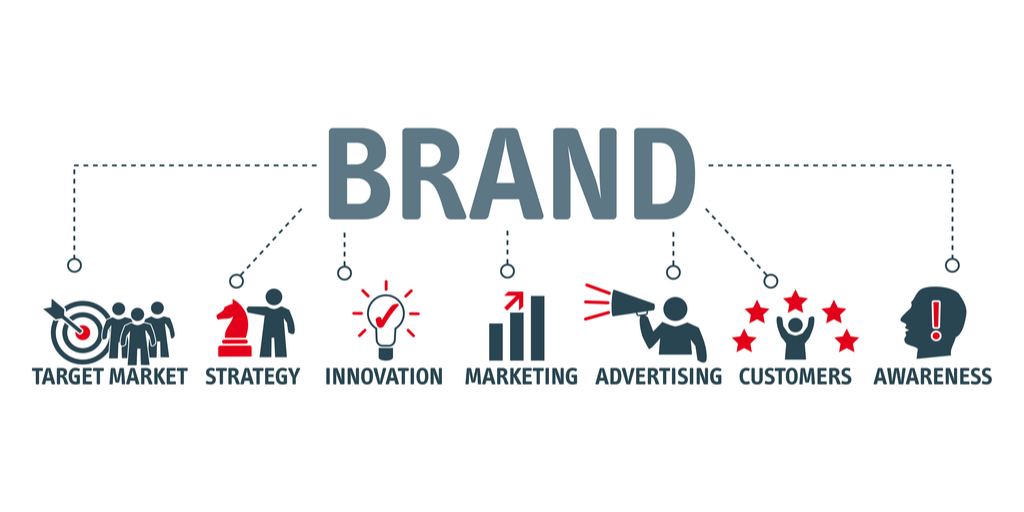
Has your brand’s overall performance seen a dip? Or has it suddenly picked up and you’re not sure from where? Well, the answer to both of these situations is to conduct a brand audit.
But what is one? And what will it achieve? Basically, it’s an overall review of how successful your brand is currently within its market sector.
This post will outline the perfect brand audit template and will cover everything you require to carry out your own successfully.
We’ll cover:
A brand audit is a detailed analysis of how your business is performing in line with its overall goals and objectives. More broadly, a brand audit positions your business in the overall market based on your performance.

Obviously, these audits will differ from company to company depending on industry and overall personal preference. But the majority of them should allow you to:
Some businesses outsource other companies to carry out their brand audit – that’s because they’re not easy to conduct and can be quite time consuming, which is problematic if you’re in a busy period. Aspects they’ll look at are:
Of course, if you have the spare time and knowledge then conducting your own brand audit is more cost-effective.
A brand audit gives you clarity and transparency of how your business is performing. For all business owners, that’s important to know. Without clarification, you could be led to thinking that everything is all rosy when in reality it looks pretty ugly under the surface. That’s a situation that everybody would like to avoid.
Once you’ve had the clarification of what your business is doing well and what it might be struggling with, you can then set about laying down corrective strategies to put it right. Plus, you’ll have a better idea of what to include in your next campaigns and what to axe.

Once you’ve seen what you’re doing well, you’ll feel a sense of empowerment that should drive a further hunger to succeed. Identifying your weaknesses is good for any business – although they’re not that easy to admit in the first place. They’ll keep you grounded, but will also help you make more informed decisions.
A brand audit allows you to clearly see how your audience is responding to your marketing efforts. That means as a result of carrying out your brand audit, you’ll be able to align your strategies more closely with the ways that they prefer to consume information.
A lot of businesses tend to carry out brand audits when they’re looking at totally rebranding their business. A brand audit is a necessity if you’re looking to change any aspect of your business.
A simple way of looking at it is that a brand audit is a way of “taking stock” and looking at your business as it currently stands. It helps you look at different ways that you could redirect your business.

Plus, your company might not need a full rebrand. It might just need tweaking in places and gently pushing in a different direction. A brand audit would highlight this. Rather than you taking a shot in the dark and making mass changes when they might not be necessary.
A brand audit allows you to strip back your brand right to the barebones. This is beneficial as it’s a timely reminder of your core values before you decide on any changes that you’re going to make. The last thing that you want is to lose all brand identity, that won’t solve anything and may result in your brand performing worse than before the audit.
The first step of any brand audit process should be creating a framework. So, before you start analysing your site, make a list of topics that you’d like to cover and how you’re going to tackle the process.
Mind-mapping is a good way to start this process. Jot down everything that directly or indirectly involves your business. Topic areas that you should look at are:
As a business, you should be taking a look at your web analytics regularly. These are the best indicators of how your brand is performing. The first place you should start is:
This metric is used to see if your brand has gained popularity or is going unnoticed. You need to dive beneath the surface wit this metric. Figures may look good on the surface but look a bit deeper and you may realise that your traffic is coming from a location that you’re not targeting. For example, another country.

The wrong kind of traffic is as useful as no traffic. Geographical locations are massively important when looking at your traffic figures.
This metric determines the percentage of visitors that land on your site and then immediately bounce off it. A high bounce rate suggests that there’s an issue with your page. Maybe the copy isn’t persuasive enough for the visitor to fill in the submission form? Or maybe the design isn’t clear enough for visitors to navigate the site easily?
As the name suggests, this metric allows you to see how many times the different pages on your site have been viewed. This will allow you to determine which pages are the most/least popular.
This figure will allow you to see which campaigns do well and which ones struggle. This could help shape further marketing strategies or even be the push you need to drop a tactic.
Conversion rate allows you to see whether you’re on track or not to achieving your overall goals and objectives. This is a crucial figure for B2B marketing campaigns as it allows you to see how many times a form has been submitted or a premium content piece has been downloaded. Again, this is an important figure that can shape future campaign strategies.

Your web analytics are a good option for gaining an internal view of your business positioning. However, there’s nothing quite like customer feedback. After all, it’s your customers who’ll be spreading the word about your business – good or bad.
So, it’s a good idea to get an idea of how your business is perceived.
Customer polls are an effective way of gaining feedback. As a rule of thumb, polls should only contain one question, so be sure to run a handful so that you can get a scope of customer opinion throughout your business.
Online surveys are another good way of retaining feedback. A lot of businesses consider them better than polls due to the detail that the customer can go into with their answers. So, be sure to ask open questions as opposed to ones that can be answered with a single word.

Feedback forms can be sent to existing email lists or posted out on social media. Be sure not to make your forms too long. Your customers won’t make the time to sit around and fill in a survey that has 50 questions on it. Keep it short and sweet, but make sure you collect everything you need.
Take note of the language and words that your customers use in their feedback. Compile the results and look for common themes. Once you’ve analysed the results, why not try using some of their language in your next campaign? It may reach out and resonate with your audience on a more personal level.
The best way to know what experience your customers are receiving from your brand is to test it from their point of view. You should constantly do this to make sure that there are no glitches or issues with your site.
User testing allows you to access key features of your site including general navigation, shopping cart, checkout and account creation as if you were an actual customer.
In addition to general testing, make sure that you test these vital factors:
There’s no point carrying out a brand audit if you’re not going to action your findings, is there?
Remember it’s not just your site that will need auditing. You’ll also need to look at your social media channels, printed marketing materials and anything that represents the business to your customers and competitors. Don’t worry, you can apply the same auditing practices as we’ve explained to explore these.

So, once you’ve concluded your audit you should put all your findings into a detailed report and action plan. List all of the problems that you discovered in your audit and within each issue, you should detail what’s expected and set a realistic target with a time frame too.
After all of your action plans have been rolled out and put into practice, start the brand audit process over again. Brand audits aren’t a one-off thing, they need doing regularly. We recommend that you carry them out quarterly to achieve the best results.
Your brand audit is all about bettering your business from its current position. But once you’ve found your weaknesses, you now know how to correct your marketing efforts to achieve the best results.
Subscribe to our fortnightly newsletter to hear about our latest podcasts, blogs, career advice & jobs.